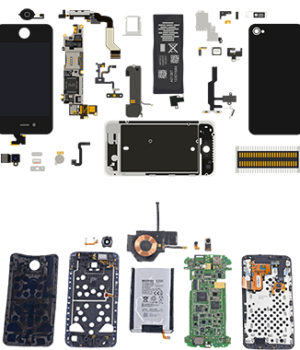IFTINFO – We benchmark the Snapdragon 8 Gen 2: solid CPU gains, impressive GPU upgrade laissez un commentaire
[ad_1]
Qualcomm unveiled the Snapdragon 8 Gen 2 last month and the first phones with it are starting to come out. While the vivo X90 Pro+ was the first to be announced, we don’t have a unit to test. But we do have an iQOO 11, and we spent quite some time putting it through its paces.
Benchmarks of the new chip have been leaking for a while now; however, you can never be sure if there isn’t anything shady going on with those. With the iQOO 11 on hand, we have a market-ready device that we know is on the level.
Our unit has 16GB of RAM and 256GB storage, which gives the Snapdragon 8 Gen 2 a great opportunity to shine. And, boy, does it shine! Keep in mind that this is a generational improvement, less so if you include the 8+ Gen 1 (which we did), and it still uses the TSMC N4 node. What Qualcomm has achieved is quite impressive.
Before proceeding to the charts, allow us to introduce the chip in more detail. The Snapdragon 8 Gen 2 uses a mix of ARM cores. The Cortex-X3 is the leader of the pack and based on official data, it should be 25% faster than the Cortex-X2 used in the Gen 1 chips. That is the guideline for single-threaded performance.
Then there is a mix of four mid-sized cores. Two are Cortex-A715, which should be 20% faster than the older A710 core. The Gen 2 chip also has two of those A710 cores, so multi-threaded performance is harder to estimate. This is based on data from ARM, Qualcomm says that the CPU is 35% faster overall (compared to the original 8 Gen 1 CPU) and 40% more efficient (which we are not testing today).
Here is a summary of the chipsets we are looking at today:
Snapdragon 8 Gen 1
Snapdragon 8+ Gen 1
Snapdragon 8 Gen 2
Node
Samsung 4LPX
TSMC N4
TSMC N4
CPU (Prime)
1x Cortex-X2 @ 3.0GHz
1x Cortex-X2 @ 3.2GHz
1x Cortex-X3 @ 3.2GHz
CPU (Mid)
3x Cortex-A710 @ 2.5GHz
3x Cortex-A710 @ 2.75GHz
2x Cortex-A715 @ 2.8GHz
CPU (Mid 2)
-
-
2x Cortex-A710 @ 2.8GHz
CPU (Small)
4x Cortex-A510 @ 1.8GHz
4x Cortex-A510 @ 2.0GHz
3x Cortex-A510 @ 2.0 GHz
GPU
Adreno 730 @ 818MHz
Adreno 730 @ 900MHz
Adreno 740 @ 680MHz
System cache
6MB
6MB
8MB
RAM
LPDDR5
LPDDR5
LPDDR5X
Storage
UFS 3.1
UFS 3.1
UFS 4.0
The Snapdragon 8 Gen 2 also uses the new Adreno 740 GPU. Qualcomm is secretive about the hardware specifics, but there must have been a major change. One interesting thing to note is that the 740 runs at lower clock speeds than the 730 in the Gen 1 chips. Even so, Qualcomm says that the new GPU is 25% faster than its predecessor (and 45% more efficient).
If anything, Qualcomm was conservative with its GPU claims – we’re seeing much larger speed ups even over the Snapdragon 8+ Gen 1, which itself was a modest improvement over the original chip from the beginning of this year (10% faster). The focus of the Plus chip was power efficiency. And once that was achieved, Qualcomm could turn its attention to making things faster.
We will start with AnTuTu, which is a full system benchmark, to try and get a sense of the overall improvement brought on by Gen 2. This isn’t an entirely apples to apples comparison, as the Gen 1 chips only support LPDDR5 RAM and UFS 3.1 storage. The Snapdragon 8 Gen 2, however, supports the faster LPDDR5X DRAM and UFS 4.0 storage, and the iQOO 11 makes full use of them.
AnTuTu 9
Higher is better
Snapdragon 8 Gen 2
1281665
Highest Snapdragon 8+ Gen 1
1103188
Highest Snapdragon 8 Gen 1
1056488
Average Snapdragon 8+ Gen 1
982268
Average Snapdragon 8 Gen 1
975803
This is important to keep in mind – the chipset alone doesn’t determine real-life performance. By adding support for new, faster memory formats, Qualcomm has enabled makers to build faster phones.
Now, we can get a closer look at how the individual components perform. We start with Geekbench 5, which measures both single and multi-threaded performance. Remember, the target for single-core improvement is 25% over the Cortex-X2 at the same node and same clock speed (i.e. over the implementation seen in the 8+ Gen 1).
The chipset doesn’t quite hit that mark, but we’re not going to scoff at an 18% improvement over the 8+ Gen 1. The gap to the 8 Gen 1 chip is even wider, 26%, though that one could only run its prime core at 3.0GHz, so no surprise there. But the 8+ Gen 1 and 8 Gen 2 cores are clocked the same, so the speedup comes from the new architecture.
GeekBench 5 (single-core)
Higher is better
Snapdragon 8 Gen 2
1479
Highest Snapdragon 8+ Gen 1
1345
Average Snapdragon 8+ Gen 1
1256
Highest Snapdragon 8 Gen 1
1246
Average Snapdragon 8 Gen 1
1179
Multi-threaded workloads show a similar improvement of 22% over the 8+ Gen 1; the gap to the original Snapdragon 8 Gen 1 is even wider with a 33% speed up.
GeekBench 5 (multi-core)
Higher is better
Snapdragon 8 Gen 2
4803
Highest Snapdragon 8+ Gen 1
4349
Average Snapdragon 8+ Gen 1
3924
Highest Snapdragon 8 Gen 1
3855
Average Snapdragon 8 Gen 1
3618
The CPU improvements are solid, if perhaps not groundbreaking. Qualcomm’s hands are tied here as it uses tweaked Cortex CPU cores from ARM. Maybe things will be different when the Nuvia team delivers a mobile CPU design, but this is the reality we have for 2023.
The Adreno GPUs are all Qualcomm, though, and they do surpass the +25% target in several tests. Before we get to that, we need to talk about resolution and frame rate. The iQOO 11 comes with a 1,440 x 3,200px display with up to 120Hz refresh rate (it’s an LTPO4 panel).
However, plenty of phones with Gen 1 chips use FHD+ class displays. To keep the playing field level, we tried two different things: one, set the iQOO 11 to FHD+ resolution and two, look at offscreen results (where physical resolution doesn’t matter).
The first approach has some issues, namely GFXBench Manhattan ES 3.0 hit the 120fps cap, so the GPU was actually held back by the display. We didn’t run older GFXBench tests as they would have encountered the same issue.
This is a good thing – if this was a game, you would have gotten a stable 120fps playthrough. A few devices scored higher – gaming phones like Asus ROG Phone 6 Pro and Red Magic 7, which have 165Hz screens. This means that the averages here are misleading since several results are skewed by the display fps cap. Offscreen tests sidestep this issue, but there is another solution – use a more demanding benchmark that won’t hit the display fps cap.
GFX Manhattan ES 3.0 (onscreen)
Higher is better
Highest Snapdragon 8 Gen 1
163
Highest Snapdragon 8+ Gen 1
161
Average Snapdragon 8 Gen 1
123
Snapdragon 8 Gen 2 (fps cap!)
120
Average Snapdragon 8+ Gen 1
109
Let’s stick to FHD+ mode for a bit longer since we know there are plenty of Snapdragon 8 Gen 2 phones on the way with FHD+ displays. We’re only looking at onscreen tests here.
The GFXBench Aztec tests shows around a 50% improvement using both the OpenGL ES backend and the newer Vulkan backend. The phone can just about deliver 90fps gameplay at this resolution. The Snapdragon 8 Gen 2 makes high refresh rate/frame rate gaming possible at FHD+, while the Gen 1 chips make you choose between high resolution and framerate. Naturally, benchmarks are more demanding than real games, so we should see a large number of titles playable at 90fps and even 120fps with the Gen 2.
GFX Aztek ES 3.1 High (onscreen)
Higher is better
Snapdragon 8 Gen 2
89
Highest Snapdragon 8+ Gen 1
67
Average Snapdragon 8+ Gen 1
61
Highest Snapdragon 8 Gen 1
61
Average Snapdragon 8 Gen 1
57
GFX Aztek Vulkan High (onscreen)
Higher is better
Snapdragon 8 Gen 2
91
Highest Snapdragon 8+ Gen 1
69
Highest Snapdragon 8 Gen 1
64
Average Snapdragon 8+ Gen 1
61
Average Snapdragon 8 Gen 1
61
Alright, now let’s look at raw GPU performance by switching over to offscreen tests. These are standardized to a 16:9 aspect ratio (at either 1080p or 1440p) and avoid physical limitations like the display’s refresh rate.
Starting with Aztec at 1440p, we again see an improvement in performance of around 50%. The gap between Vulkan and OpenGL ES is smaller than it was on the Gen 1 chips, but Vulkan still has a slight edge.
GFX Aztek ES 3.1 High (offscreen 1440p)
Higher is better
Snapdragon 8 Gen 2
62
Highest Snapdragon 8+ Gen 1
46
Average Snapdragon 8+ Gen 1
43
Highest Snapdragon 8 Gen 1
43
Average Snapdragon 8 Gen 1
40
GFX Aztek Vulkan High (offscreen 1440p)
Higher is better
Snapdragon 8 Gen 2
69
Highest Snapdragon 8+ Gen 1
52
Highest Snapdragon 8 Gen 1
48
Average Snapdragon 8+ Gen 1
46
Average Snapdragon 8 Gen 1
44
3DMark’s Wild Live (Vulkan, 1440p) shows a smaller improvement, around 30%. Still, Qualcomm was only promising a 25% increase, so the Snapdragon beats expectations once again.
3DMark Wild Life Vulkan 1.1 (offscreen 1440p)
Higher is better
Snapdragon 8 Gen 2
12738
Highest Snapdragon 8+ Gen 1
10533
Highest Snapdragon 8 Gen 1
10118
Average Snapdragon 8+ Gen 1
9978
Average Snapdragon 8 Gen 1
9642
Moving over to 1080p tests like Car Chase and Manhattan, the improvements here are smaller. These are fairly old and may not be stressing the GPU sufficiently, so the benchmark is running into other bottlenecks.
GFX Car Chase ES 3.1 (offscreen 1080p)
Higher is better
Snapdragon 8 Gen 2
128
Highest Snapdragon 8+ Gen 1
104
Average Snapdragon 8+ Gen 1
97
Highest Snapdragon 8 Gen 1
97
Average Snapdragon 8 Gen 1
92
GFX Manhattan ES 3.1 (offscreen 1080p)
Higher is better
Snapdragon 8 Gen 2
222
Highest Snapdragon 8+ Gen 1
187
Highest Snapdragon 8 Gen 1
175
Average Snapdragon 8 Gen 1
164
Average Snapdragon 8+ Gen 1
157
Conclusion
The new Adreno 740 GPU inside the Snapdragon 8 Gen 2 is truly impressive, and we haven’t even tested what it can do with ray tracing. The new chipset will enable high frame rate gaming in more titles than is currently possible, and it will allow developers to enable higher-quality graphic settings at the same time.
Something we didn’t look at today is sustained performance – that is something that varies from phone to phone. For the iQOO 11 in particular, our upcoming review will have information on that as well as other interesting performance metrics (like testing the UFS 4.0 storage).
There is one last thing to address, Qualcomm apparently has an upgraded version of the Snapdragon 8 Gen 2. This is just a rumor for now, Ice Universe claims that the Prime core runs at 3.36GHz (up from 3.2GHz) and that the GPU is at 719MHz (Up from 680MHz). Qualcomm has not officially confirmed the existence, but there are clues that suggest that the SM8550-AC is real, so we end this post with a “to be continued”.
[ad_2]








